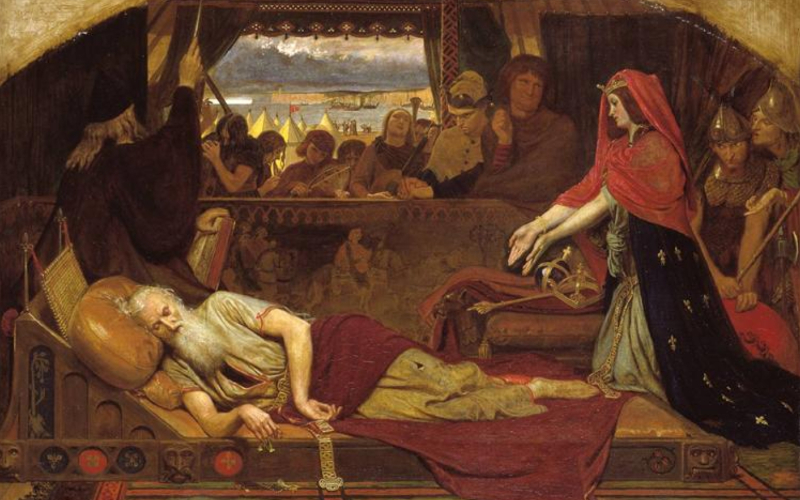This is the first of three artworks by Brown that depict scenes from the tragedy King Lear by William Shakespeare.
The inspiration for all three images came from a set of pen and ink sketches made during a trip to Paris in 1843–1844. Brown first saw William Charles Macready (1793-1873) performing in the play on May 2, 1848. That same year, in November, he started work on the picture.
The play’s Act IV, Scene VII is depicted in the painting. The majority of the figures were created using models by Brown, but the head of Lear was inspired by “a cast of Dante’s and a drawing of Coulton.”
For the soldiers on the right, he used his favorite model, Maitland, and for the fool, who is holding Lear in his menacing gaze, he used Dante Gabriel Rossetti, a new student and friend. The hands of Cordelia were modeled after a professional model named Mrs. Ashley, but the head was based on his own future wife, Emma.
Brown himself stated in his 1865 catalog that “paganism was still rife, and deeds were at their darkest” in the 6th century, which is when he decided to dress his figures in order to capture the spirit of Shakespeare’s play. Lear includes a detail from one of the key scenes from the Bayeux Tapestry behind his head.
The image was first displayed at the Free Exhibition in 1849, where it received favorable reviews but did not garner any sales. Brown worked on the painting on and off until 1854, when architect John Seddon purchased it for 15 guineas.
Lear’s supine position alludes to the worn-out sleep of old age, and Cordelia’s kneeling position with outstretched hands depicts a pitying observer. The stage-like environment is set up as a multi-angled tent, which is further defined by the frame’s shallow arch.
The half screen and the crowd of musicians beyond emphasize the seclusion and stillness of the foreground figures. They appear to be moving in a restricted manner, and the bright light of the far shore through the small opening in the tent only serves to emphasize the gloom and darkness of the cramped interior.











